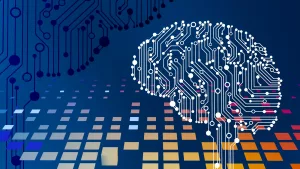When you type a query into a search engine, a sophisticated blend of technology and data science works tirelessly to deliver accurate and relevant results. This process is underpinned by advanced algorithms, machine learning, and natural language processing, allowing the search engine to parse vast datasets and predict user intent with remarkable precision.
Indexing and Retrieval
The Role of Web Crawlers
Search engines start by indexing the web, where bots known as web crawlers or spiders traverse web pages. These crawlers systematically browse the internet, cataloging and storing web pages in an intricate structure known as an inverted index. This index is designed for rapid retrieval, mapping keywords to their locations on the web.
How Crawlers Work
Web crawlers operate by following links from one page to another, gathering data on each page they visit. They look at everything from the page’s textual content to its metadata and multimedia files. Advanced recognition algorithms analyze these elements, creating a comprehensive index that accommodates diverse content types. For instance, Google uses its Googlebot to continuously update its index, ensuring that it captures fresh and relevant information.
Metadata and Multimedia
Beyond text, search engines analyze structure, metadata, and multimedia content. Metadata provides context about the page, such as its author, creation date, and description, which can influence search rankings. Multimedia content is assessed through image recognition and video indexing technologies, allowing search engines to understand content beyond words. This is why when you search for a video or image, engines can provide precise results that match your intent.
Machine Learning and Predictive Analytics
Enhancing Algorithm Performance
Machine learning is pivotal in refining search algorithms, allowing them to learn from vast amounts of search data. Techniques like neural networks and decision trees analyze user interactions to identify patterns, enhancing the algorithms’ ability to predict future user behavior. For example, when users frequently click on a particular type of result for a query, the algorithm learns to prioritize similar results for future searches.
Neural Networks and Decision Trees
Neural networks, inspired by the human brain, help search engines recognize complex patterns in data. Decision trees, on the other hand, use a tree-like model of decisions to arrive at conclusions. These techniques are crucial in developing algorithms that are not only faster but also more intuitive.
Real-World Application: Google’s RankBrain
Google’s RankBrain is an excellent example of machine learning in action. It helps process search results and provides more relevant results based on the understanding of search queries. RankBrain learns from each search and gradually improves its ability to predict what users truly want, even if their queries are vague or previously unseen.
Natural Language Processing (NLP)
Understanding User Queries
NLP is crucial for interpreting user queries. By dissecting the language structure and understanding semantics, NLP algorithms help search engines grasp the user’s intent. This includes analyzing syntax, context, and the relationship between words, enabling the engine to deliver results that go beyond keyword matching, offering answers that are contextually relevant and semantically accurate.
Semantic Search and Contextual Understanding
Semantic search focuses on the meaning behind words, allowing search engines to understand the context in which they are used. For example, if you search for “Apple,” the engine uses context to determine whether you’re looking for information about the fruit or the tech company.
Challenges in NLP
One of the challenges in NLP is dealing with homonyms, synonyms, and language nuances. Search engines must accurately interpret these to deliver the correct results. Advances in NLP, such as Google’s BERT (Bidirectional Encoder Representations from Transformers), have significantly improved the interpretation of complex queries by considering the full context of words in a sentence.
Personalization Techniques
Tailoring Results to Users
Personalization algorithms use data such as search history, location, and device type to tailor results to individual users. By employing collaborative filtering and user profiling, search engines predict user preferences, enhancing the relevance of the search results.
Data-Driven Personalization
Search engines collect data on past searches, clicked links, and even the time spent on certain pages. This data helps build a profile of the user’s interests and preferences. For example, if a user frequently searches for vegan recipes, the engine will prioritize similar results in future queries.
Privacy Considerations
While personalization improves the user experience, it also raises privacy concerns. Search engines must balance personalization with user privacy, often providing options for users to control their data. Understanding these privacy settings can help users manage how much personal data is used in tailoring search results.
Knowledge Graphs and Data Structuring
Organizing Information
Knowledge graphs play a critical role in organizing information, allowing search engines to create interconnected data points. These structures provide users with not just web page links but comprehensive, structured information, enriching the search experience with in-depth, connected insights into their queries.
How Knowledge Graphs Work
Knowledge graphs connect entities like people, places, and things, showing how they relate to each other. This interconnected data helps search engines answer complex queries directly. For instance, if you ask, “Who is the CEO of Tesla?” the search engine can directly provide the answer rather than just a list of links.
Enhancing User Experience
The use of knowledge graphs enhances the user experience by providing quick access to concise and relevant information. This feature is particularly useful for mobile users who may prefer quick answers over browsing through multiple pages.
Continuous Evolution and AI Integration
Keeping Up with Technological Advancements
The field of search engine technology is ever-evolving, with continuous updates to algorithms and the integration of AI advancements. AI enhances search engines’ predictive capabilities, enabling more nuanced understanding and response to user queries.
AI-Driven Features
Features like voice search and visual search rely heavily on AI. Voice search, for example, uses AI to understand spoken queries and provide accurate results, which is becoming increasingly important as more users shift to mobile and smart home devices.
Future Trends
The future of search engines lies in further integrating AI and machine learning to create even more intuitive, efficient, and user-centric experiences. As AI technology advances, we can expect search engines to offer even more personalized and accurate results, understanding user intent with greater precision.
Practical Tips for Users
Optimizing Your Search Queries
- Use Specific Keywords: Be as specific as possible. Instead of searching for “best restaurants,” try “best Italian restaurants in New York.”
- Utilize Search Operators: Learn to use operators like quotes for exact matches or the minus sign to exclude terms.
- Understand Search Settings: Familiarize yourself with search settings to customize your experience, such as language preferences and safe search filters.
Staying Informed About Privacy
- Review Privacy Settings: Regularly check and adjust your privacy settings on search engines to control what data is collected.
- Use Incognito Modes: For more privacy, use incognito or private browsing modes that do not save your search history.
Leveraging Advanced Features
- Voice and Image Search: Experiment with voice and image search for hands-free and visual searching experiences.
- Explore Related Questions: Use the “People also ask” feature to explore related topics and expand your knowledge.
The technical intricacies behind search engines are a testament to the remarkable advancements in data science, AI, and computational linguistics. These technologies work in harmony to sift through the internet’s vast expanse, offering users a seamless and insightful search experience, tailored to their individual needs and enhanced by a deep, interconnected understanding of data. As these technologies continue to evolve, so too will the ways in which we access and interact with the wealth of information available online.




